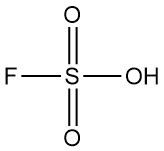
Sodium hydroxide is a strong base with the formula NaOH. In its pure form it is a white crystalline solid, but it dissolves easily in water to form a colorless solution.
It is not found in nature but rather produced on a large scale from readily available raw materials. It is widely used in many chemical processes.
Due to its propensity to cause chemical burns on contact with many substances, it is referred to as caustic soda.
The use of sodium hydroxide solution dates back to early Afro-Oriental cultures, where they were aware of the reaction of sodium carbonate with calcined limestone (causticization of soda).
In Egyptian tombs dating back to the 3rd century B.C., alabaster vessels containing 3% sodium hydroxide solution have been found near the Pyramid of Cheops.
The first written records of caustic soda production during the early years A.D. were from Egypt and India.
Table of Contents
1. Sodium hydroxide properties
Determining the physical and chemical properties of pure sodium hydroxide is a challenging task due to its high affinity for water.
In most cases, the properties of impure sodium hydroxide are extrapolated to estimate the properties of the pure substance.
Similarly, when studying aqueous solutions of sodium hydroxide, concentration-dependent physical properties are difficult to determine due to their tendency towards supersaturation.
1.1. Physical Properties of Sodium Hydroxide
Some physical properties of solid sodium hydroxide are as follows:
molar mass of sodium hydroxide is 40 g/mol
Appearance: white, crystalline
Density of sodium hydroxide (liquid, 350 °C)= 1.77 g/cm3
mp (soda and water free) 322 ± 2 °C
1.2. Chemical Reactions of sodium hydroxide
Sodium hydroxide is a strong base.
Pure sodium hydroxide is strongly hygroscopic, making it difficult to determine its physical and chemical properties. It dissolves in water with the release of heat and forms six distinct hydrates.
During transportation and storage of sodium hydroxide solutions, containers must be heated or insulated as the melting points of some hydrates are above 0°C.
NaOH reacts readily with atmospheric carbon dioxide in the presence of moisture to produce sodium carbonate. Similarly, it reacts with carbon monoxide under pressure and in the presence of moisture to produce sodium formate.
The high affinity of sodium hydroxide for water results in a reduction of water vapor pressure, making it an effective drying agent. It is moderately soluble in methanol and ethanol.
Anhydrous sodium hydroxide reacts slowly with most substances, including metals such as Fe, Mg, Ca, and Cd, which are attacked only slightly at room temperature. However, corrosion rates increase significantly with increasing temperature.
Noble metals like nickel, silver, gold, and platinum are only slightly affected, especially when exposed to oxidizing atmospheres.
In contrast, amphoteric metals such as zinc, aluminum, tin, and lead are attacked by dilute sodium hydroxide solution at room temperature, while iron, stainless steel, and nickel are relatively resistant.
Sodium hydroxide also reacts with both organic and inorganic acids to form sodium salts.
2. Production of sodium hydroxide
For the production of sodium hydroxide solution see this article.
For the production of solid (anhydrous) sodium hydroxide see this article.
3. Uses of sodium hydroxide (caustic soda)
Dilute aqueous solutions of sodium hydroxide are widely used by most of its consumers. Over 56% of the production is used in the chemical industry.
Inorganic chemistry applications include manufacturing of sodium salts, pH regulation, and alkaline ore digestion.
The organic chemical industry utilizes sodium hydroxide for various purposes, including the production of nucleophilic anionic intermediates, etherification, esterification, saponification reactions, basic catalysis, and production of free organic bases.
Sodium hydroxide solution is also used in scrubbing waste gases and neutralizing wastewater.
In the paper industry, it is used for cooking wood to remove lignin. The textile industry employs sodium hydroxide solution to manufacture viscose and viscose staple fibers, and mercerization is used to improve the surface of cotton.
In the detergent industry, significant amounts of sodium hydroxide are used for sodium phosphate production.
The saponification of fats and oils with sodium hydroxide solution is used to manufacture soaps, and detergents are produced from organic sulfonic acids and sodium hydroxide.
The aluminum industry primarily uses sodium hydroxide for bauxite treatment.
Ion exchangers for water purification and wastewater treatment are regenerated using dilute sodium hydroxide solution in waterworks.
Other consumers of sodium hydroxide include electroplating technology, the natural gas and petroleum industries, the glass and steel industries, and gold extraction (cyanide leaching).
The food industry employs sodium hydroxide for various cleaning purposes, including peeling potatoes and degreasing.
In pulp and paper production, the consumption of caustic soda accounts for about a quarter of global caustic demand. Demand growth will likely remain slow as these markets are relatively mature.
The remaining 75 % of global NaOH demand is inclined to follow the health of the local manufacturing base, which is tied to the local gross domestic product.
Reference
- Sodium Hydroxide; Ullmann’s Encyclopedia of Industrial Chemistry. Weinheim: Wiley-VCH.- https://onlinelibrary.wiley.com/doi/10.1002/14356007.a24_345.pub2




